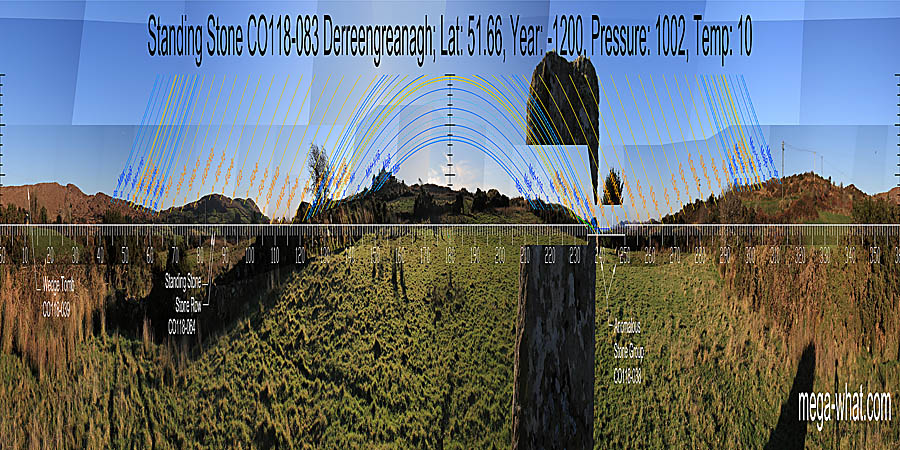 This Standing Stone at Derreengreanagh is 2km or so south of Bantry and sitting in a saddle.
A shorter Standing Stone is 30m to its south-west but classified as part of Derreengreanagh Anomalous Stone Group.
This Standing Stone at Derreengreanagh is 2km or so south of Bantry and sitting in a saddle.
A shorter Standing Stone is 30m to its south-west but classified as part of Derreengreanagh Anomalous Stone Group.
South is at a step on a local hill top [Pic].
North is towards the left end of a mountain ridge [Pic].
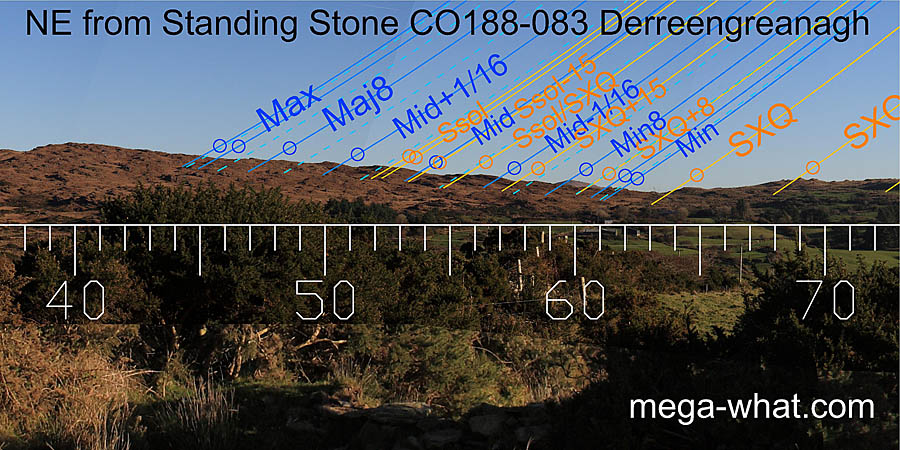 An alignment between the two Standing Stones indicates the distant Glandart hill and a lunar eighth, while the rocky ridge covers the whole
lunisticeLunistices are the most northerly and southerly moons of the month. The lunar equivalent of solstices - more.
range. Moving between the two Standing Stones gives a baseline for fine measurements.
An alignment between the two Standing Stones indicates the distant Glandart hill and a lunar eighth, while the rocky ridge covers the whole
lunisticeLunistices are the most northerly and southerly moons of the month. The lunar equivalent of solstices - more.
range. Moving between the two Standing Stones gives a baseline for fine measurements.
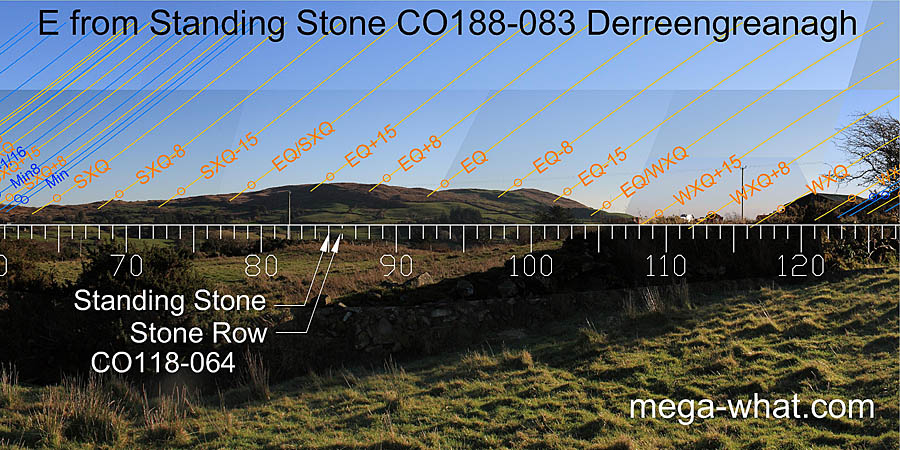 Look east to the equinoctial dip: From the north-east Standing Stone its declination is about -0.13°.
From the south-west one it is about +0.13°. A semi-diameter or so between them.
Look east to the equinoctial dip: From the north-east Standing Stone its declination is about -0.13°.
From the south-west one it is about +0.13°. A semi-diameter or so between them.
Visible about 900m away are Cullomane West Stone Row and Standing Stone.
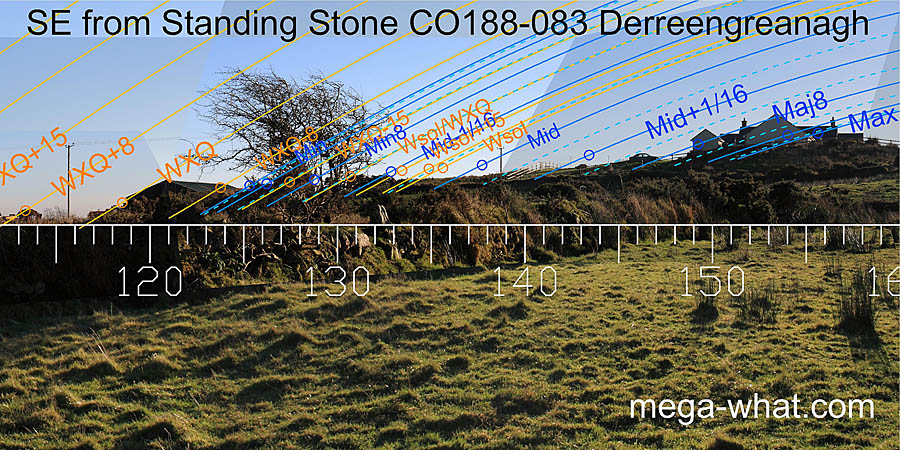 The lunisticeLunistices are the most northerly and southerly moons of the month. The lunar equivalent of solstices - more.
zone runs up the south-eastern slope, ending at the edge of a very local hilltop. Moving between the two Standing Stones makes a big difference on this profile.
The lunisticeLunistices are the most northerly and southerly moons of the month. The lunar equivalent of solstices - more.
zone runs up the south-eastern slope, ending at the edge of a very local hilltop. Moving between the two Standing Stones makes a big difference on this profile.
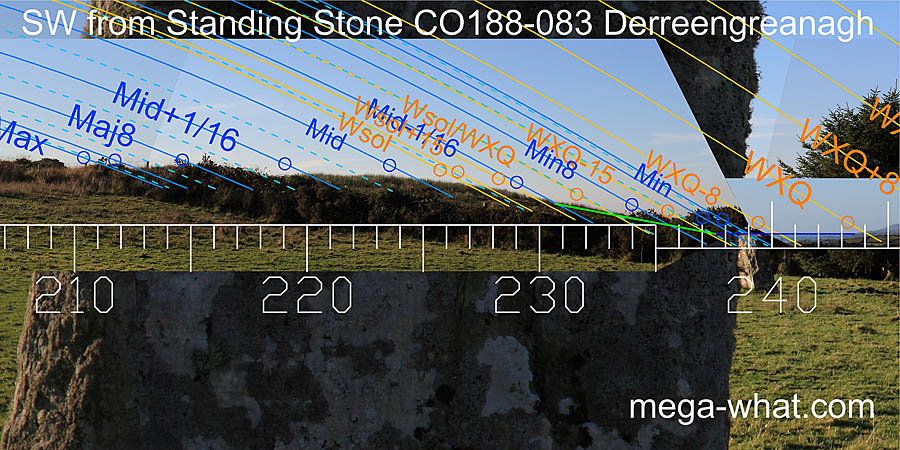 The south-western lunisticeLunistices are the most northerly and southerly moons of the month. The lunar equivalent of solstices - more.
range runs down the local slope to end at the sea. Winter cross-quarters are at the sea/land intersect of the north side of Dunmanus Bay.
The south-western lunisticeLunistices are the most northerly and southerly moons of the month. The lunar equivalent of solstices - more.
range runs down the local slope to end at the sea. Winter cross-quarters are at the sea/land intersect of the north side of Dunmanus Bay.
 The distant west is similar from both Standing Stones but from here the intersect with nearer ground has moved southwards.
The equinoctial quarter-month bracket is in a local dip rather than at the intersect.
The distant west is similar from both Standing Stones but from here the intersect with nearer ground has moved southwards.
The equinoctial quarter-month bracket is in a local dip rather than at the intersect.
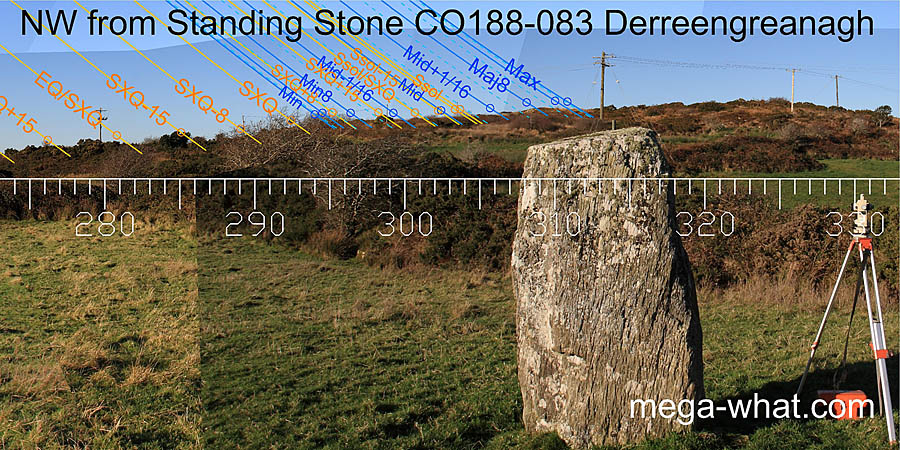 To the north-west, the lunar major eighth is at a rocky hump with the major standstillLunistice positions vary cyclically over an 18.6 year period but are fairly static for more than a year at either end of the range
running on into the following dip.
To the north-west, the lunar major eighth is at a rocky hump with the major standstillLunistice positions vary cyclically over an 18.6 year period but are fairly static for more than a year at either end of the range
running on into the following dip.
the lunar minor eighth is at the point occupied by the solstice/cross-quarter sun from the other Standing Stone.
- Scartbaun Stone Row is c.700m due west.
- Baurgorm (W) Five Stone Circle is c.700m east.
- Derreengreanagh Wedge Tomb is on the ridge, c.1.5km north-north-east.
References
- Archaeological Survey of Ireland, record details. www.archaeology.ie/archaeological-survey-ireland
- POWER, D. et al. 1992 Archaeological Inventory of County Cork, Volume 1: West Cork. Dublin: Stationary Office. p53:no.336.
